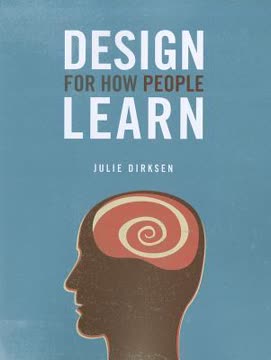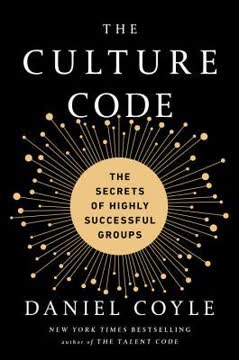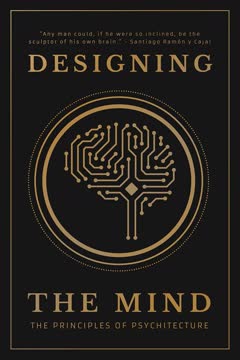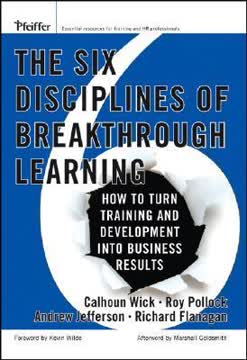Key Takeaways
1. Learning is a Business Investment, Not an Event
Business education is a means to an end, not an end in itself.
Focus on performance. Organizations invest in learning and development (L&D) to improve performance, not merely to provide training. This means L&D initiatives are strategic investments in human capital, expected to yield tangible benefits like increased productivity, enhanced competitiveness, and improved customer service. If learning doesn't contribute to the organization's mission and goals, it's a wasted investment.
Value through application. The true value of L&D is realized only when new knowledge and skills are applied on the job, leading to improved actions and business results. Treating learning as a one-off "event" where attendance is the goal, rather than a continuous "process" of application, severely limits its impact. This shift in mindset is crucial for L&D professionals to become trusted business partners.
Beyond the classroom. The traditional focus on instructional design and delivery, while important, is insufficient. The entire learning journey—what happens before, during, and long after formal instruction—determines whether learning translates into performance. L&D must broaden its scope to manage this complete experience, ensuring that learning is integrated into the workflow and supported by the organizational environment.
2. D1: Define Business Outcomes First
Everything Depends on Getting D1 Right.
Start with the end. The most critical discipline is to clearly and unambiguously define the desired business outcomes before investing in any learning initiative. This means articulating specific, measurable performance goals that align with the company's strategic objectives, rather than just listing learning objectives. Without a clear "why," efforts risk being misdirected and wasteful.
Business objectives vs. learning objectives. Business objectives are key performance targets (KPIs) that the organization must achieve, such as increasing sales or reducing defects. Learning objectives, conversely, define what employees will know or be able to do after training. While learning objectives guide instruction, they don't communicate the business rationale. L&D must translate learning into business impact.
Co-ownership is vital. Engage business leaders in defining these outcomes, using tools like the Outcomes Planning Wheel. This collaborative process ensures buy-in and clarifies what success looks like, fostering shared accountability. It also helps identify if training is even the right solution, or if other factors are impeding performance.
3. D2: Design the Complete Learner Journey
Learning professionals need to design the complete learning journey to results, not just hope for a miracle.
Holistic experience matters. The learner's experience is a continuum, encompassing everything from initial awareness to sustained application. Effective L&D designs this entire journey, actively planning for what happens before and after formal instruction, not just during the "event." This includes managing expectations, providing prework, and ensuring post-training support.
Four phases of transformation:
- Anticipation: Shaping positive expectations before training through clear communication of benefits and managerial support.
- Acquisition: Efficiently imparting new skills and knowledge, often through meaningful prework and active learning.
- Application: Ensuring learning transfer to the job, the most common point of failure.
- Achievement & Maintenance: Recognizing progress and providing ongoing support to sustain new behaviors.
Reset expectations. Move the "finish line" from course completion to successful on-the-job application. Awarding certificates or credit only after new skills are demonstrated reinforces that the real goal is improved performance. This shift helps combat the "event mentality" and encourages active engagement throughout the entire learning process.
4. D3: Deliver for Application, Not Just Knowledge
A great learning experience is not about the content, but is about the way the content is taught.
Learning for doing. Corporate learning aims to change what people do, not just what they know. Instruction must be designed to maximize the transfer of learning to the work, emphasizing skill development and practical application. This requires understanding how people learn, remember, and apply knowledge.
Optimize the learning process:
- Attention is paramount: Design programs to immediately grab and periodically recapture learners' attention, breaking content into short, engaging segments. Avoid multitasking.
- Manage cognitive load: Respect the limits of working memory by avoiding information overload. More content is not always better; it can hinder learning the essentials.
- Enhance encoding: Facilitate deep learning by encouraging learners to connect new information to existing knowledge, generate their own examples, and engage in elaborative rehearsal (e.g., explaining concepts to others).
- Prioritize practice: Dedicate significant time to authentic, scaffolded practice with meaningful feedback. Deliberate practice, focusing on technique and reflection, is crucial for skill mastery.
Make it meaningful. Adult learners are pragmatic; they need to understand "What's in it for me?" (WIIFM) and the "why" behind each topic and exercise. Clearly linking learning to job responsibilities and personal success boosts motivation and application.
5. D4: Drive Learning Transfer as the Yield-Limiting Step
No matter how great the learning is, if transfer is poor, the results will be poor.
The weakest link. Learning transfer—the application of new skills and knowledge on the job—is the yield-limiting step in most L&D initiatives. Even excellent training produces "learning scrap" if it's not used. This inefficiency wastes significant resources and undermines L&D's credibility.
Overcoming inertia. Changing established behaviors requires sustained effort, as old habits are deeply ingrained. Learning alone is insufficient; participants need compelling reasons to change (motivation) and situation-specific support to act (volition). Without ongoing energy, new behaviors will revert to old routines.
Address the core problems:
- Lack of concern: Learning transfer is often not recognized as a critical business problem.
- Lack of measurement: Most organizations don't track transfer rates, making improvement impossible.
- Lack of ownership: Transfer falls into a "no-man's land" between L&D and line management, with neither taking full accountability.
L&D must proactively raise awareness, measure transfer, and foster co-ownership with business leaders to plug these leaks and maximize the return on learning investments.
6. D5: Deploy Performance Support for Sustained Application
Performance support helps ensure that employees do the right thing at the right time in the right way, every time.
Bridge the gap. Performance support complements, amplifies, and reinforces training by providing just-in-time assistance at the moment of need. It helps employees answer "Yes, I can" by reducing reliance on memory, especially for complex or infrequently performed tasks. This support is crucial for bridging the "learning-doing gap."
Types of support:
- Physical objects: Checklists, job aids, posted procedures.
- Electronic information: How-to videos, digital guides, online directories.
- Systems: Automated error-checking, safety lockouts, adaptive software.
- People: Coworkers, mentors, coaches, managers.
Power of early success. Appropriate performance support increases the likelihood of early success when employees first apply new skills. These "small wins" are powerfully motivating, encouraging continued effort and preventing relapse into old habits. In some cases, robust performance support can even reduce or eliminate the need for formal training.
Integrate and optimize. Performance support should be an integral part of every learning initiative, introduced and used during training, not just as an afterthought. It must be readily available, specific, minimally disruptive, practical, clear, economical, effective, and current. Leveraging technology like AI, AR, and VR offers unprecedented opportunities for personalized, context-sensitive support.
7. D6: Document Results to Prove and Improve Value
The only two questions that count: So what? Now what?
Prove and improve. Documenting results serves two critical purposes: proving the value of L&D investments and providing actionable insights for continuous improvement. Business leaders demand evidence that resources are well-spent, asking "So what?" (Did it make a difference?) and "Now what?" (What should we do next?).
Effective evaluation criteria:
- Relevant: Measures directly relate to business goals, not just activity or enjoyment.
- Credible: Data, analysis, and conclusions are trustworthy and believable to stakeholders.
- Compelling: The case for action is unambiguous, memorable, impactful, and concise.
- Efficient: Uses the least amount of resources necessary to produce acceptable results.
Beyond reaction scores. Traditional Level 1 (reaction) and Level 2 (learning) evaluations are insufficient. Relevant outcomes include changes in on-the-job behaviors (a leading indicator of business results), business metrics (KPIs), time savings, observations, and success stories. Focus on what matters to the business, not just what's easy to measure.
Continuous improvement. Evaluation is the engine of continuous improvement, enabling L&D to apply Lean principles like the Plan-Do-Check-Act (PDCA) cycle. By assessing both outcomes and the execution of the learning process (e.g., transfer climate), L&D can identify weak links, implement targeted changes, and continuously enhance its contribution to organizational success.
8. Combat Learning Scrap: The Hidden Cost of Unused Training
In the absence of learning transfer, training is scrap; it consumes resources but produces no value.
Waste is the enemy. Learning scrap refers to training that employees attend but never apply to improve performance. Like manufacturing scrap, it represents a significant waste of time, money, and opportunity. Estimates suggest that over half of corporate training falls into this category, costing billions annually.
Hidden costs. The costs of learning scrap are often hidden, unlike tangible manufacturing defects. This makes it harder for management to recognize and address the problem. However, the intangible costs are substantial:
- Customer dissatisfaction with L&D.
- Damage to L&D's reputation and brand.
- Lost opportunities for improved performance.
Moment of truth. Whether learning becomes value or scrap depends on the "moment of truth" when an employee decides to apply new skills. This decision hinges on two questions: "Can I do it the new way?" and "Will I make the effort?" If either answer is no, the learning is wasted.
L&D professionals must proactively highlight the issue of learning scrap to business leaders, drawing parallels to other forms of waste, and advocate for strategies that ensure application and value creation.
9. Managers are the Most Influential Learning Resource
70% of the variance in team engagement is determined solely by the manager.
Disproportionate impact. Managers have a profound and often underutilized impact on learning transfer and the overall transfer climate. Their actions, or inactions, send powerful signals to employees about the priority and value of training. Managers can either be catalysts for change or significant impediments.
Range of engagement:
- Actively opposed: Managers who explicitly forbid or ridicule the use of new learning.
- Discouraging: Managers who subtly undermine new approaches.
- Neutral/Indifferent: Managers who say nothing, which employees interpret as disapproval or low priority.
- Encouraging: Managers who actively support and commend efforts to apply new skills.
- Requiring: Managers who mandate the use of new learning as "the way we do business here."
Why managers fall short. Managers often fail to support transfer due to a perceived lack of time (it's not a priority) or a lack of know-how (they're unsure how to coach effectively). L&D must address these root causes by demonstrating the value of coaching and providing concise, actionable guidance.
L&D must engage managers early, educate them on their critical role, and equip them with the tools and processes needed to actively support learning transfer. Senior leadership must also hold managers accountable for employee development.
10. Embrace Systems Thinking for Holistic Performance
Isolated initiatives rarely solve business issues because business issues are inherently systemic in nature.
Interconnected factors. Organizational performance is influenced by a complex interplay of factors across the "4Ws": the world (external environment), the workplace (internal company environment), the work (processes, tools), and the worker (knowledge, skills, attitudes). Focusing on just one factor, like worker skills, without considering the others, is often ineffective.
The system always wins. As Geary Rummler famously stated, "If you pit a good performer against a bad system, the system will win almost every time." Efforts to improve performance through learning must adopt a systems approach, recognizing that all elements of a system must be aligned and mutually reinforcing for optimal results.
Beyond training. L&D professionals must evolve from "order takers" to "performance consultants," helping business managers identify and address the real impediments to performance. This often means recommending non-training solutions or ensuring that training is part of a comprehensive, systemic intervention.
- Performance consulting: Analyze issues, identify contributing factors, determine if training is part of the solution, and recommend other necessary changes.
- Pre-mortem analysis: Proactively identify potential failure points in the learning ecosystem before implementation.
By understanding the systemic nature of performance, L&D can design interventions that truly drive results, rather than just addressing symptoms.
11. AI Augments, Doesn't Replace, Human Learning
We should welcome and exploit AI’s capabilities.
Transformative potential. Artificial intelligence, particularly generative AI, is rapidly transforming L&D by accelerating the creation of training materials, powering more effective practice, and enhancing performance support. AI can generate course outlines, quizzes, role-play avatars, and provide real-time, adaptive learning experiences.
Augmentation, not replacement. While AI will automate many routine tasks, it is more likely to augment human capabilities in L&D rather than replace them entirely. Human intervention remains crucial for:
- Defining generative parameters and checking AI output for accuracy and compliance.
- Providing the affective and personal connections essential for great coaching.
- Managing the overall learning process and strategic alignment.
Focus on value. AI-driven learning, like any other technology, will only add value if it's part of a robust, end-to-end process linked to business priorities. The core principles of the Six Disciplines—defining outcomes, designing experiences, driving transfer, deploying support, and documenting results—remain essential for leveraging AI effectively.
Strategic deployment. L&D professionals must familiarize themselves with AI tools, experiment with their capabilities, and strategically deploy them to increase efficiency and effectiveness. However, they must maintain their focus on performance outcomes, ensuring that technology serves the business goals, not the other way around.
Last updated:
Review Summary
The Six Disciplines of Breakthrough Learning receives high praise from readers for its comprehensive approach to corporate training and development. Reviewers appreciate its practical framework, balance of theory and implementation, and focus on improving business performance. Many consider it a must-read for learning and development professionals, managers, and instructional designers. The book's emphasis on measuring results, involving management, and ensuring application of learning resonates with readers. Some note its density and occasional preachiness, but overall, it's regarded as a valuable resource for enhancing workplace learning and organizational effectiveness.
Similar Books










Download PDF
Download EPUB
.epub digital book format is ideal for reading ebooks on phones, tablets, and e-readers.




